Experimental Investigation on the Evolution of Tensile Mechanical Behavior of Cement Stone Considering the Variation of Burial Depth
Abstract
:1. Introduction
2. Materials and Methods
2.1. Materials and Specimen Preparation
2.2. Testing Methods
| Test | Materials | Curing Conditions | Test Conditions | Reference | |||
|---|---|---|---|---|---|---|---|
| Time | Temperature | Pressure | Temperature | Pressure | |||
| (Days) | (°C) | (MPa) | (°C) | (MPa) | |||
| uniaxial compression test | G grade oil well cement; carbon fiber; calcium carbonate | 28 | 30 | atmospheric pressure | room temperature | atmospheric pressure | [15] |
| triaxial compression test | G grade oil well cement | not mentioned | not mentioned | not mentioned | room temperature | 10; 20; 40 | [16] |
| triaxial compression test | G grade oil well cement | 28 | room temperature | atmospheric pressure | 20; 60; 95; 115; 135 | 5; 15; 30; 45 | [17] |
| uniaxial compression test | ordinary Portland cement; calcium aluminate cement | not mentioned | room temperature | atmospheric pressure | room temperature | atmospheric pressure | [18] |
| direct tensile test; indirect tensile test | G grade oil well cement; several inorganic microfibers | 1 | 25 | 10.34 | room temperature | atmospheric pressure | [19] |
| brazilian splitting tests | G grade oil well cement | 7 | 60 | 20.7 | room temperature | atmospheric pressure | [20] |
| SEM | G grade oil well cement | 7 | 60; 90 | atmospheric pressure | room temperature | atmospheric pressure | [21] |
| CT scanning | G grade oil well cement | 7 | 50 | 10 | room temperature | atmospheric pressure | [22] |
3. Results
3.1. Load-Displacement Curve
3.2. Tensile Strength
3.3. Characteristics of Splitting Fracture Surface
3.4. Fracture Modes
3.5. Roughness of Splitting Fracture Surface
3.6. Micro-Morphology
3.7. Pore Structure
4. Discussion
5. Conclusions
- (1)
- At the test temperatures and pressures of 25 °C—0 MPa and 50 °C—10 MPa, the yield failure stage is not obvious in the stress curve. The cement stone exhibits typical brittle failure. At the test temperatures and pressures of 80 °C—20 MPa, 110 °C—30 MPa, and 140 °C—40 MPa, the cement stone becomes more ductile.
- (2)
- At the test temperatures and pressures of 25 °C—0 MPa and 50 °C—10 MPa, the main fracture in cement stone passes through the center of the disc and tensile failure occurs. When the test temperatures and pressures are 80 °C—20 MPa, 110 °C—30 MPa, and 140 °C—40 MPa, the main failure mode is tensile failure, accompanied by plastic shear failure.
- (3)
- The fracture surface roughness of cement stone increases gradually with an increase in the test temperature and pressure. Additionally, the fracture surface roughness in cement stone cannot be predicted only by the tensile strength and is also affected by the pore structure, test temperature and pressure.
- (4)
- With an increase in the curing temperature and pressure, the porosity of cement stone gradually increases. The pore structure of cement stone gradually transforms from closely stacked laminated sheets to interconnected fiber networks. The dense structure of cement stone gradually becomes loose and porous.
- (5)
- Under the joint influence of the pore structure and the formation temperature–pressure environment, the tensile strength of cement stone rapidly increases at depths from 0 to 2000 m, slows down at depths from 2000 to 3000 m and decreases at depths from 3000 to 4000 m.
Author Contributions
Funding
Data Availability Statement
Conflicts of Interest
References
- Gray, K.E.; Podnos, E.; Becker, E. Finite-Element Studies of Near-Wellbore Region During Cementing Operations: Part I. Spe. Drill Complet. 2009, 24, 127–136. [Google Scholar] [CrossRef]
- Raju, M.; Kumar Khaitan, S. Modeling and simulation of compressed air storage in caverns: A case study of the Huntorf plant. Appl. Energ 2012, 89, 474–481. [Google Scholar] [CrossRef]
- Wang, T.; Yang, C.; Ma, H.; Li, Y.; Shi, X.; Li, J.; Daemen, J.J.K. Safety evaluation of salt cavern gas storage close to an old cavern. Int. J. Rock Mech. Min. 2016, 83, 95–106. [Google Scholar] [CrossRef]
- Zhang, N.; Shi, X.; Wang, T.; Yang, C.; Liu, W.; Ma, H.; Daemen, J.J.K. Stability and availability evaluation of underground strategic petroleum reserve (SPR) caverns in bedded rock salt of Jintan, China. Energy 2017, 134, 504–514. [Google Scholar] [CrossRef]
- Lankof, L.; Tarkowski, R. Assessment of the potential for underground hydrogen storage in bedded salt formation. Int. J. Hydrogen Energy 2020, 45, 19479–19492. [Google Scholar] [CrossRef]
- Liu, W.; Zhang, Z.; Chen, J.; Jiang, D.; Wu, F.; Fan, J.; Li, Y. Feasibility evaluation of large-scale underground hydrogen storage in bedded salt rocks of China: A case study in Jiangsu province. Energy 2020, 198, 117348. [Google Scholar] [CrossRef]
- Yin, F.; Hou, D.; Liu, W.; Deng, Y. Novel assessment and countermeasure for micro-annulus initiation of cement sheath during injection/fracturing. Fuel 2019, 252, 157–163. [Google Scholar] [CrossRef]
- Li, J.; Xi, Y.; Tao, Q.; Li, Y.; Qu, G. Experimental investigation and numerical simulation of the emergence and development of micro-annulus in shale gas wells subjected to multistage fracturing. J. Nat. Gas Sci. Eng. 2020, 78, 103314. [Google Scholar] [CrossRef]
- Zhao, C.; Hu, X.; Zhang, Y.; Liang, H.; Fang, H.; Zhang, L.; Tang, S.; Zeng, F. Anti-channeling cementing technology for long horizontal sections of shale gas wells. Nat. Gas Ind. B 2018, 5, 212–218. [Google Scholar] [CrossRef]
- Ravi, K.; Bosma, M.; Gastebled, O. Improve the Economics of Oil and Gas Wells by Reducing the Risk of Cement Failure. In Proceedings of the IADC/SPE Drilling Conference, Dallas, TX, USA, 26–28 February 2002. SPE-74497-MS. [Google Scholar]
- Shahri, M.; Schubert, J.J.; Amani, M. Detecting and Modeling Cement Failure in High-Pressure/High-Temperature (HP/HT) Wells, Using Finite Element Method (FEM). In Proceedings of the International Petroleum Technology Conference, Doha, Qatar, 21–23 November 2005. IPTC-10961-MS. [Google Scholar]
- Griffith, J.E.; Lende, G.; Ravi, K.; Saasen, A.; Nødland, N.E.; Jordal, O.H. Foam Cement Engineering and Implementation for Cement Sheath Integrity at High Temperature and High Pressure. In Proceedings of the IADC/SPE Drilling Conference, Dallas, TX, USA, 2–4 March 2004. SPE-87194-MS. [Google Scholar]
- Li, Y.; Liu, S.; Wang, Z.; Yuan, J.; Qi, F. Analysis of Cement Sheath Coupling Effects of Temperature and Pressure in Non-Uniform In-Situ Stress Field. In Proceedings of the International Oil and Gas Conference and Exhibition in China, Beijing, China, 8–10 June 2010. SPE-131878-MS. [Google Scholar]
- Bois, A.; Garnier, A.; Galdiolo, G.; Laudet, J. Use of a Mechanistic Model to Forecast Cement-Sheath Integrity for CO2 Storage. In Proceedings of the SPE International Conference on CO2 Capture, Storage, and Utilization, New Orleans, LO, USA, 10–12 November 2010. SPE-139668-MS. [Google Scholar]
- Li, M.; Liu, M.; Yang, Y.; Li, Z.; Guo, X. Mechanical properties of oil well cement stone reinforced with hybrid fiber of calcium carbonate whisker and carbon fiber. Petrol. Explor. Dev. 2015, 42, 104–111. [Google Scholar] [CrossRef]
- Lima, V.N.; Silva, F.D.A.; Skadsem, H.J.; Beltrán-Jiménez, K.; Sunde, J.K. Effects of confinement pressure on the mechanical behavior of an oil well cement paste. J. Petrol. Sci. Eng. 2022, 208, 109769. [Google Scholar] [CrossRef]
- Xu, F.; Xu, Z.; Tang, S.; Ren, Q.; Guo, Y.; Wang, L.; Hou, Z.; Liu, Z. Evolution of physical and mechanical properties of cementing materials during underground energy exploitation and storage. J. Energy Storage 2022, 45, 103775. [Google Scholar] [CrossRef]
- Shakor, P.; Sanjayan, J.; Nazari, A.; Nejadi, S. Modified 3D printed powder to cement-based material and mechanical properties of cement scaffold used in 3D printing. Constr. Build Mater. 2017, 138, 398–409. [Google Scholar] [CrossRef]
- Quercia, G.; Chan, D.; Luke, K. Weibull statistics applied to tensile testing for oil well cement compositions. J. Petrol. Sci. Eng. 2016, 146, 536–544. [Google Scholar] [CrossRef]
- Liu, J. Research on Constitutive Equations and Evaluation Models of Mechanical Integrity of Cement Stone; Southwest Petroleum University: Chengdu, China, 2013. [Google Scholar]
- Li, Z.; Sun, J.; Luo, P.; Lin, L.; Deng, Z.; Guo, X. Research on the law of mechanical damage-induced deformation of cement sheaths of a gas storage well. J. Nat. Gas Sci. Eng. 2017, 43, 48–57. [Google Scholar] [CrossRef]
- Yang, X.; Kuru, E.; Gingras, M.; Iremonger, S. CT-CFD integrated investigation into porosity and permeability of neat early-age well cement at downhole condition. Constr. Build Mater. 2019, 205, 73–86. [Google Scholar] [CrossRef]
- UNE-EN ISO 10426-2-2003; Petroleum and natural gas industries - Cements and materials for well cementing - Part 2: Testing of well cements (ISO 10426-2:2003). (Endorsed by AENOR in December of 2003.).
- GB/T19139-2012; General Administration of Quality Supervision, Inspection and Quarantine of the People’s Republic of China. Oil Well Cement Test Method. Standards Press of China: Beijing, China, 2013.
- Zhang, J. Hydration, Hardening and Properties of Class G Oil Well Cement; Zhejiang University: Zhejiang, China, 2001. [Google Scholar]
- Tan, J.; Hu, C.; Lyu, Q.; Feng, G.; Chen, S. Experimental investigation on the effects of different fracturing fluids on shale surface morphology. J. Petrol. Sci. Eng. 2022, 212, 110356. [Google Scholar] [CrossRef]
- Feng, Q.; Liu, G.M.; Ba, H.J. Relation of Grain Grading and Deleterious Porosity of Cement-based Materials. J. Tongji Univ. Nat. Sci. 2004, 32, 1168–1172. [Google Scholar]
- Li, W. Study on Influence Factors and Action Rules of Mechanical Property Test of Cement Paste; Southwest Petroleum University: Chengdu, China, 2019. [Google Scholar]
- Yang, Y.; Ju, Y.; Liu, H.; Wang, H. Influence of porous structure properties on mechanical performances of rock. Chin. J. Rock Mech. Eng. 2009, 28, 2031–2038. [Google Scholar]

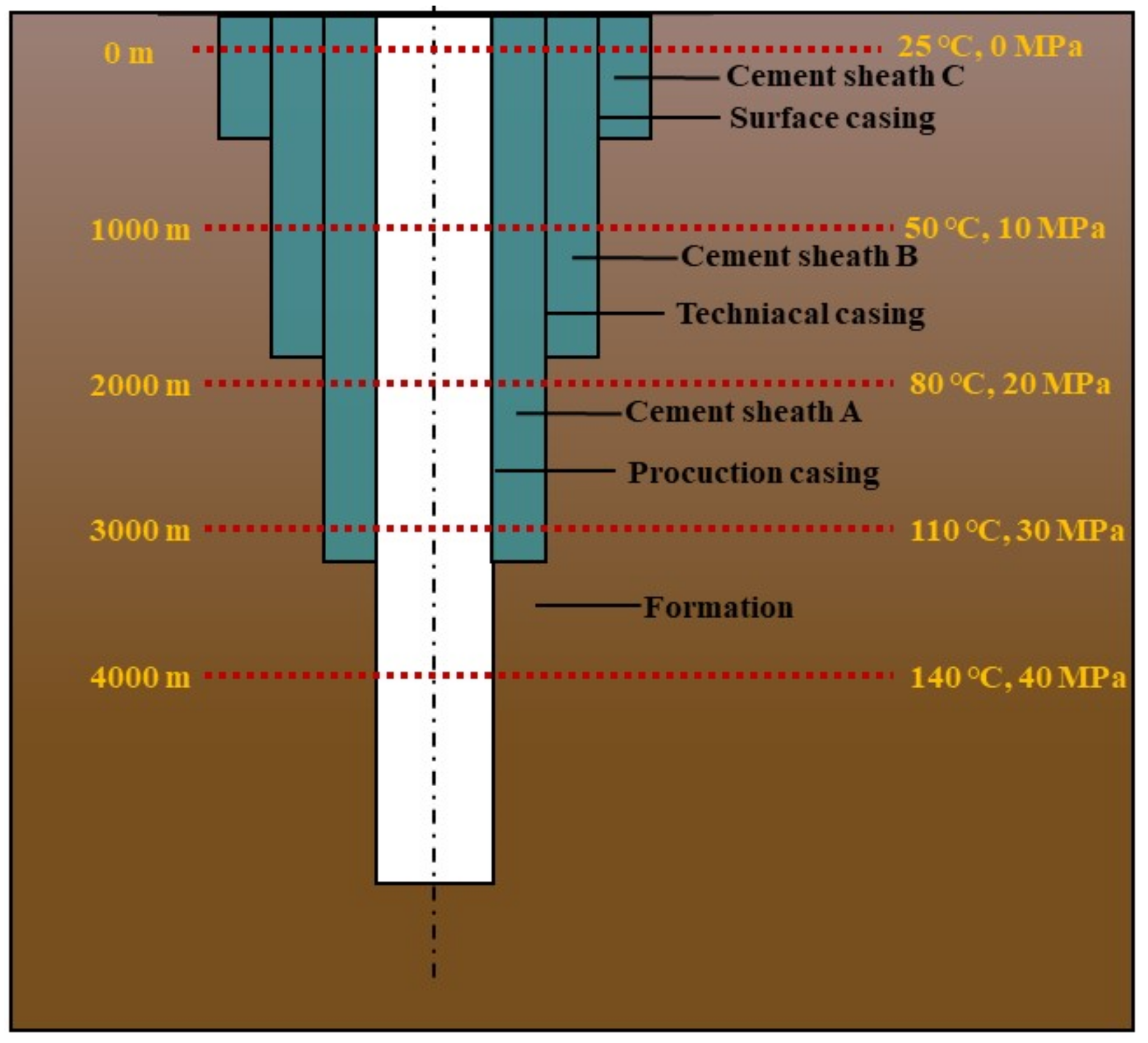
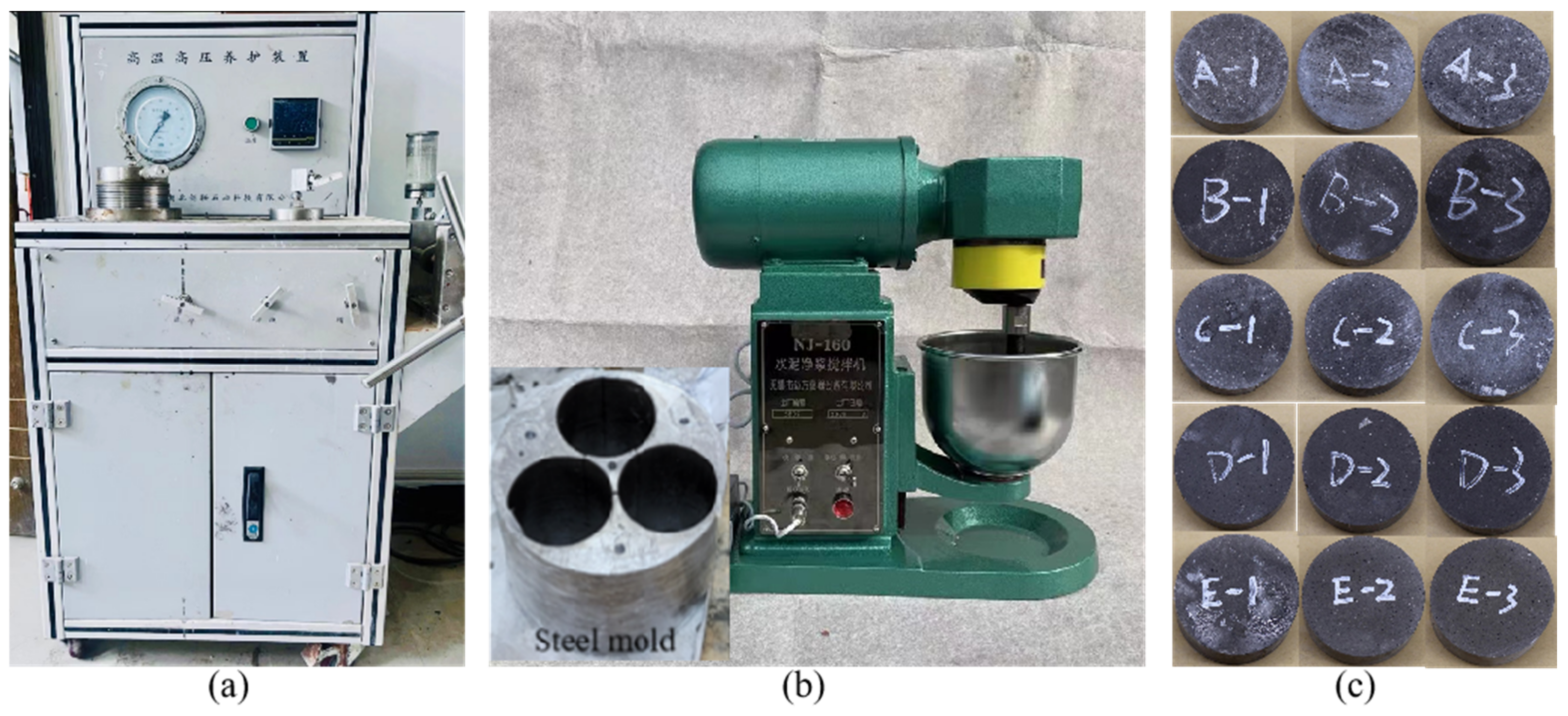

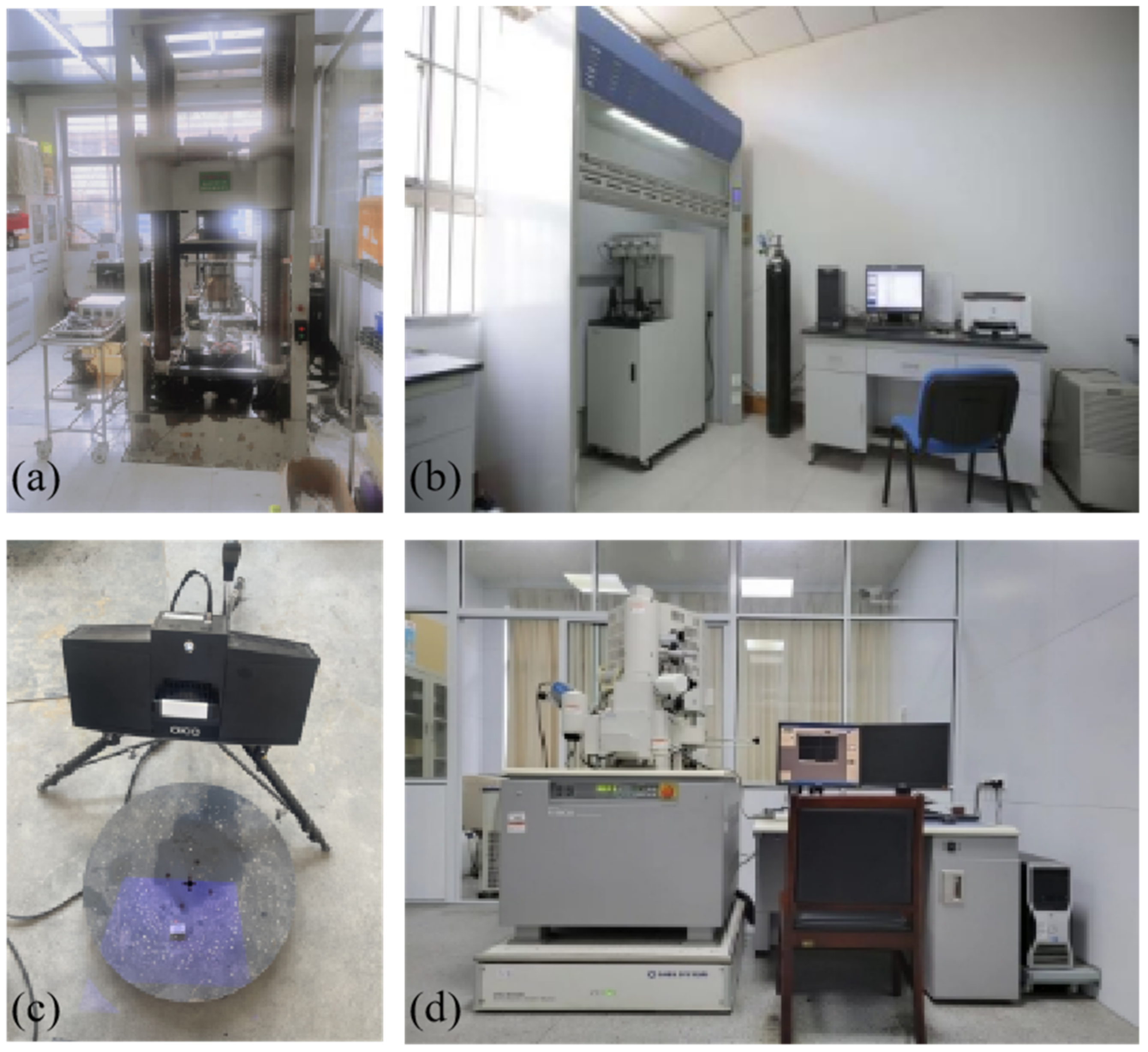
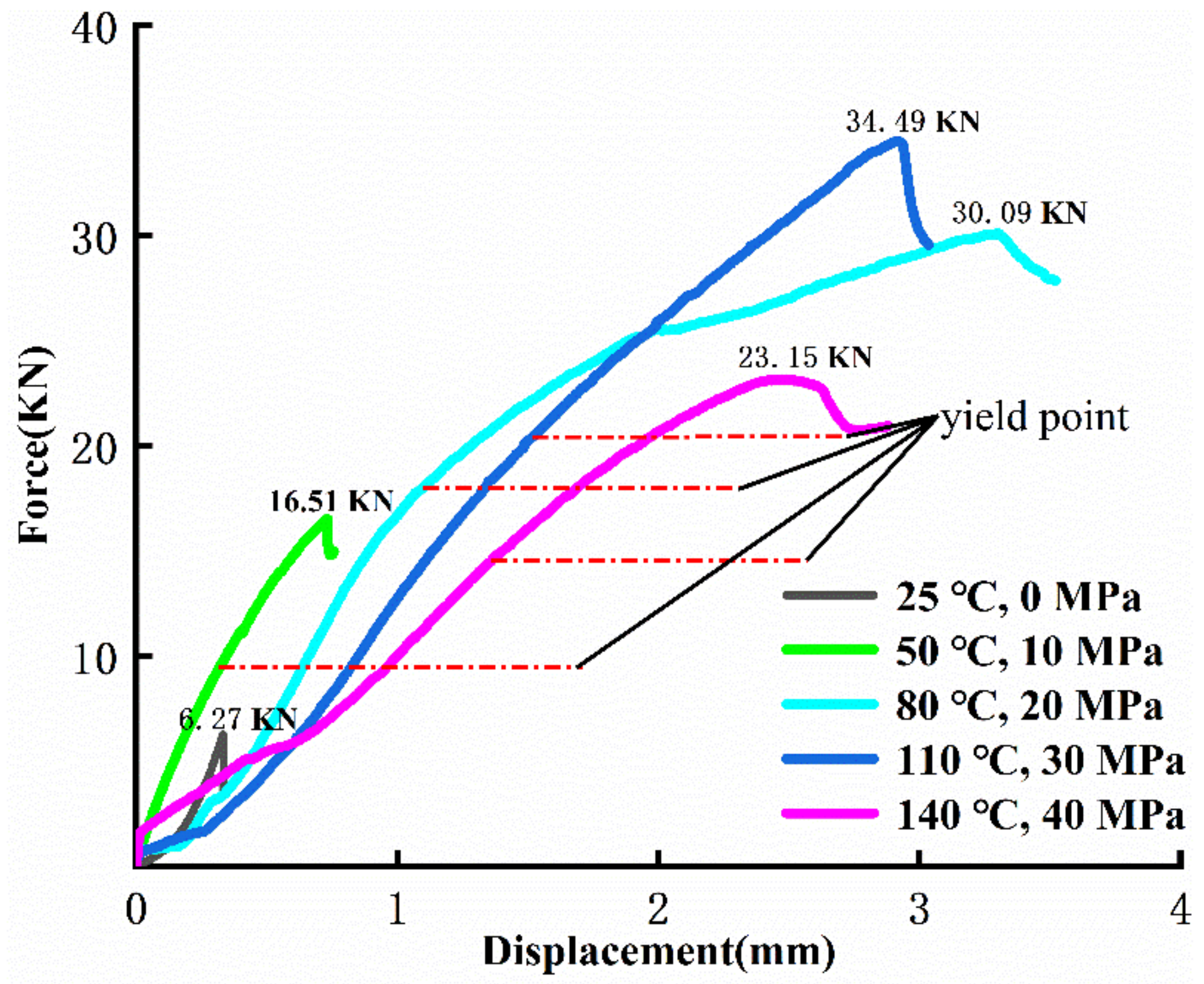
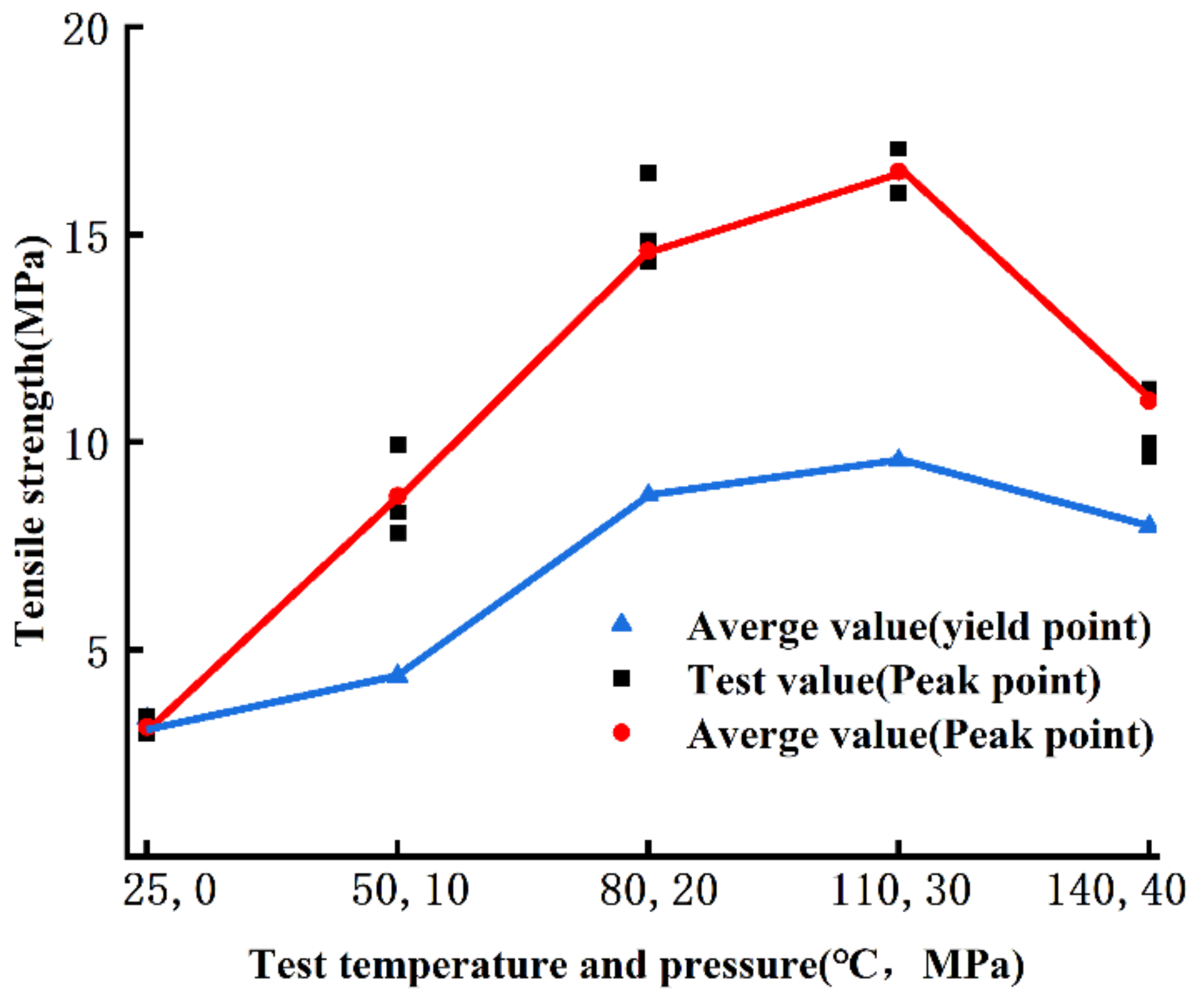
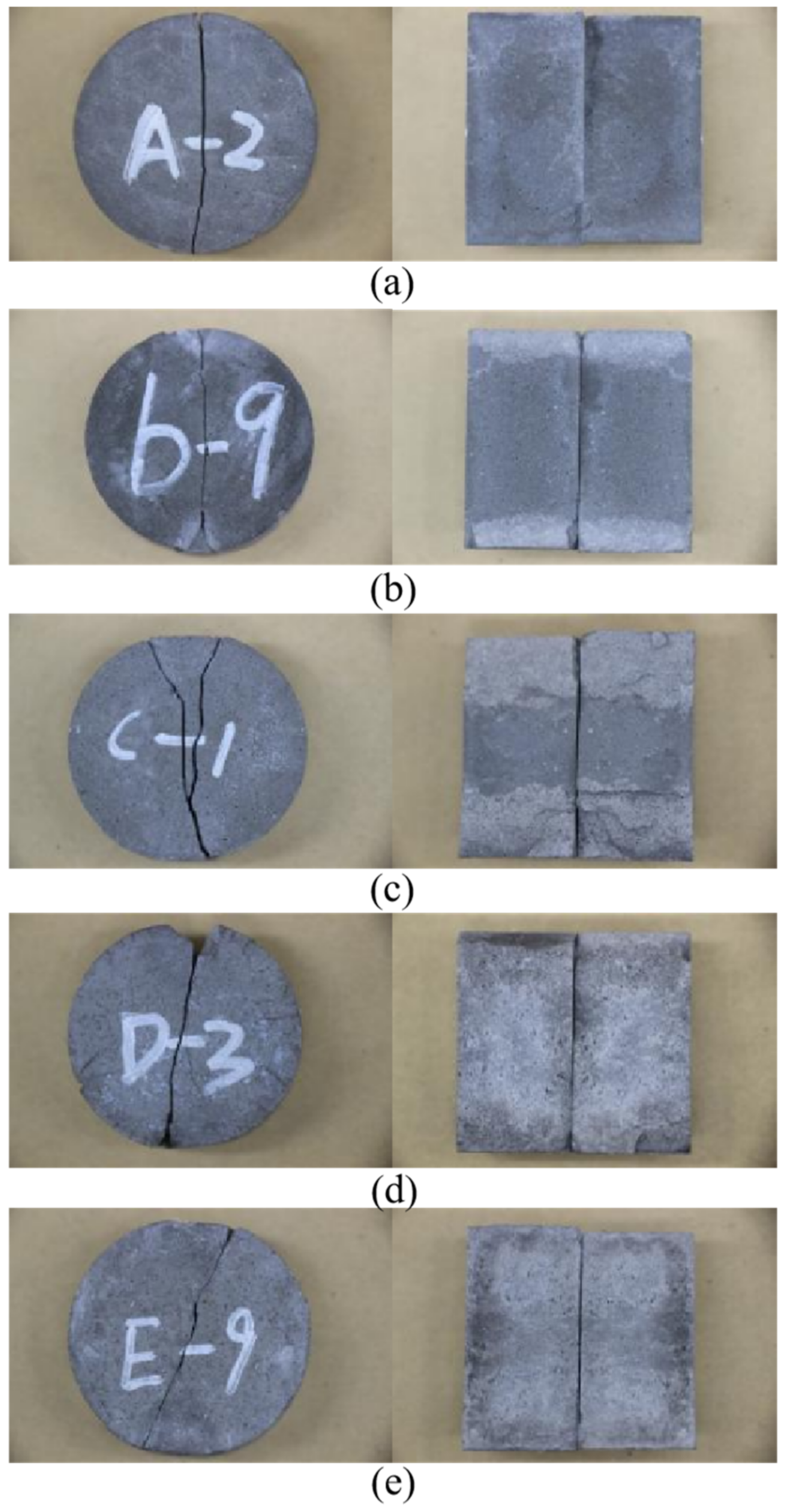
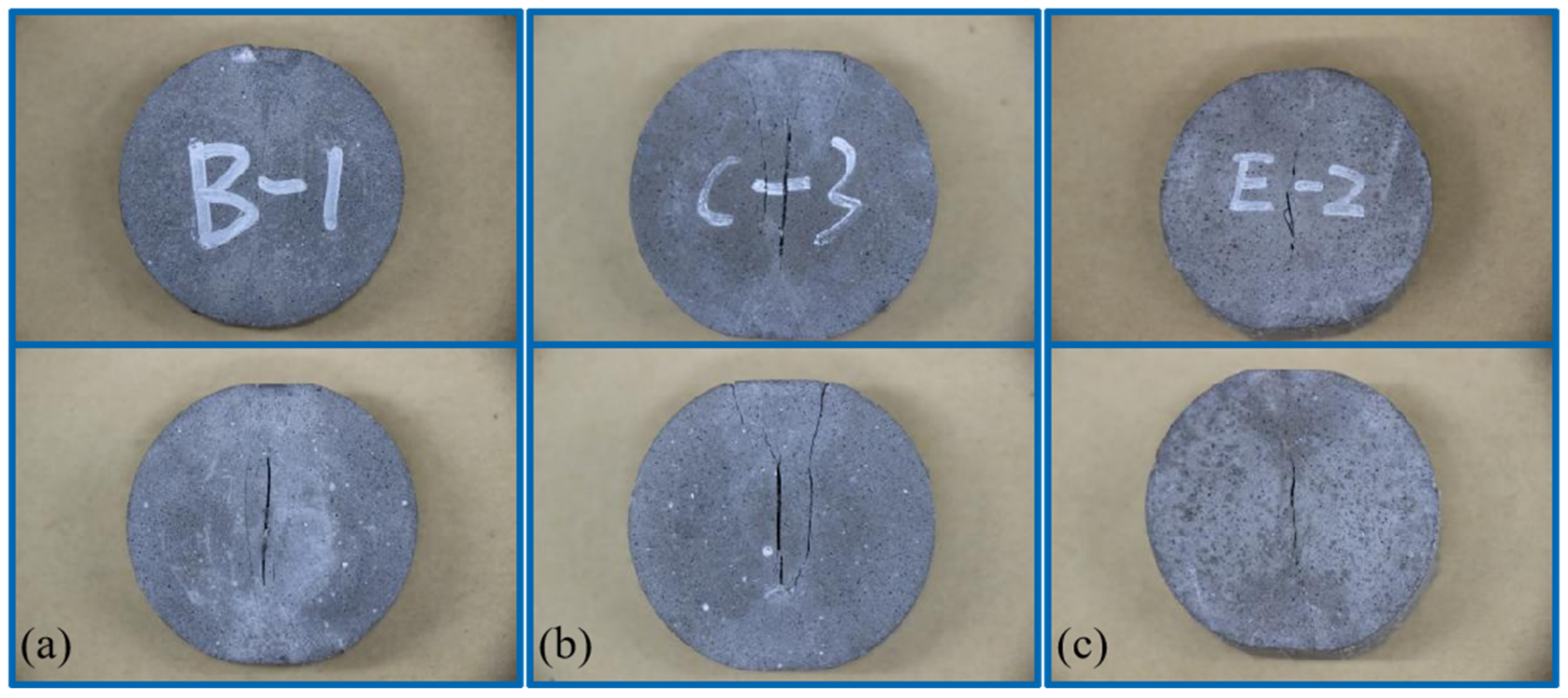
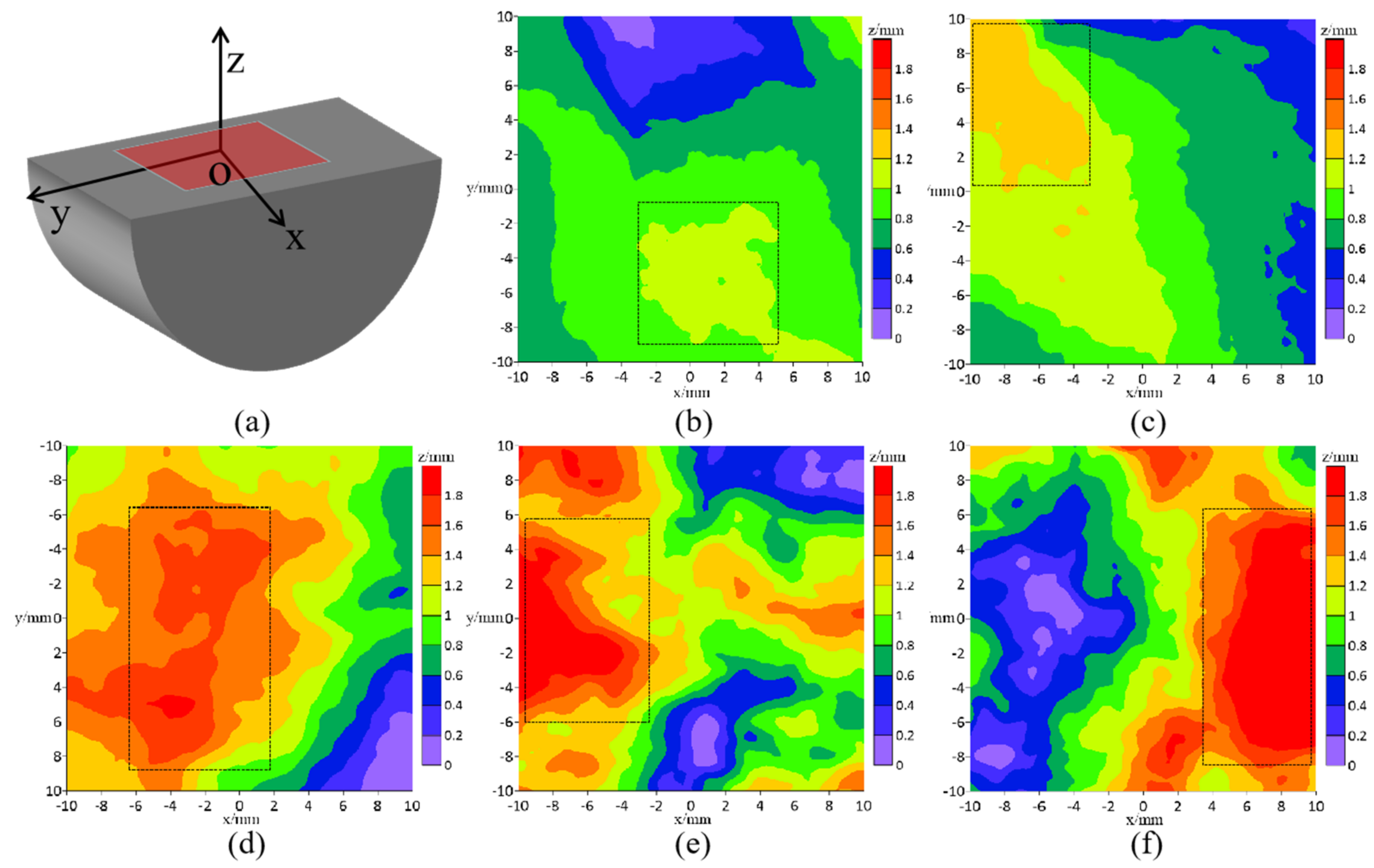
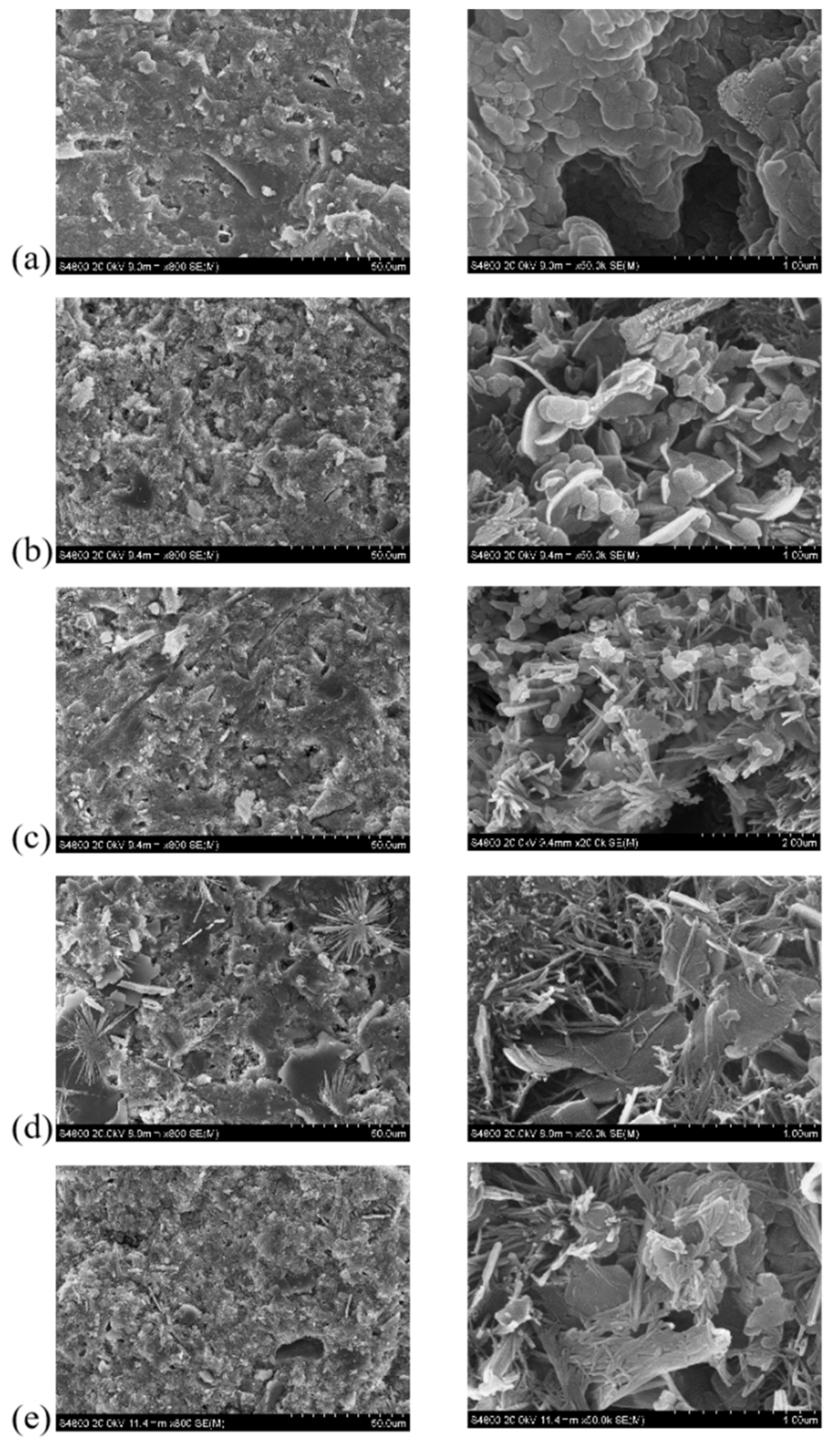
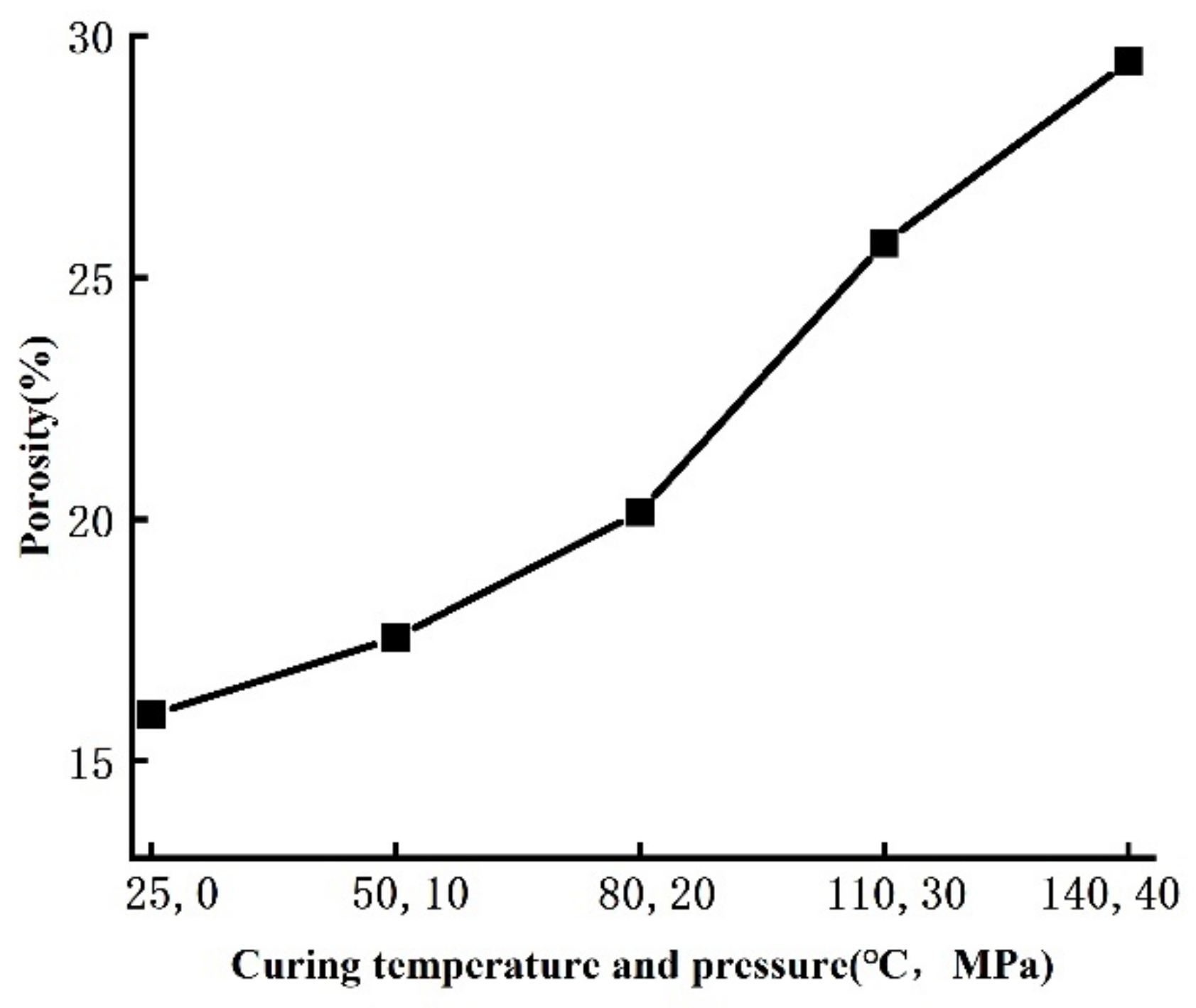
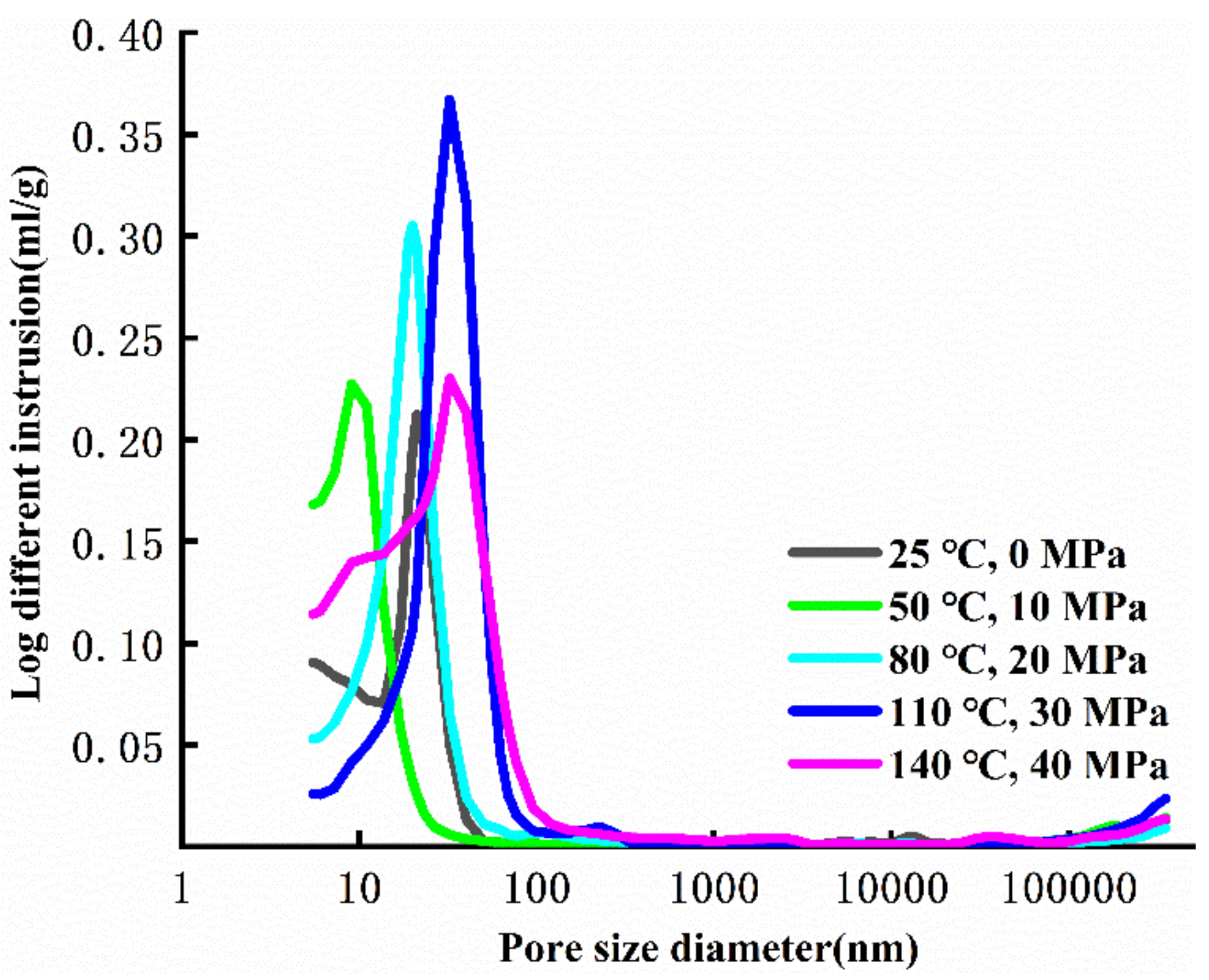
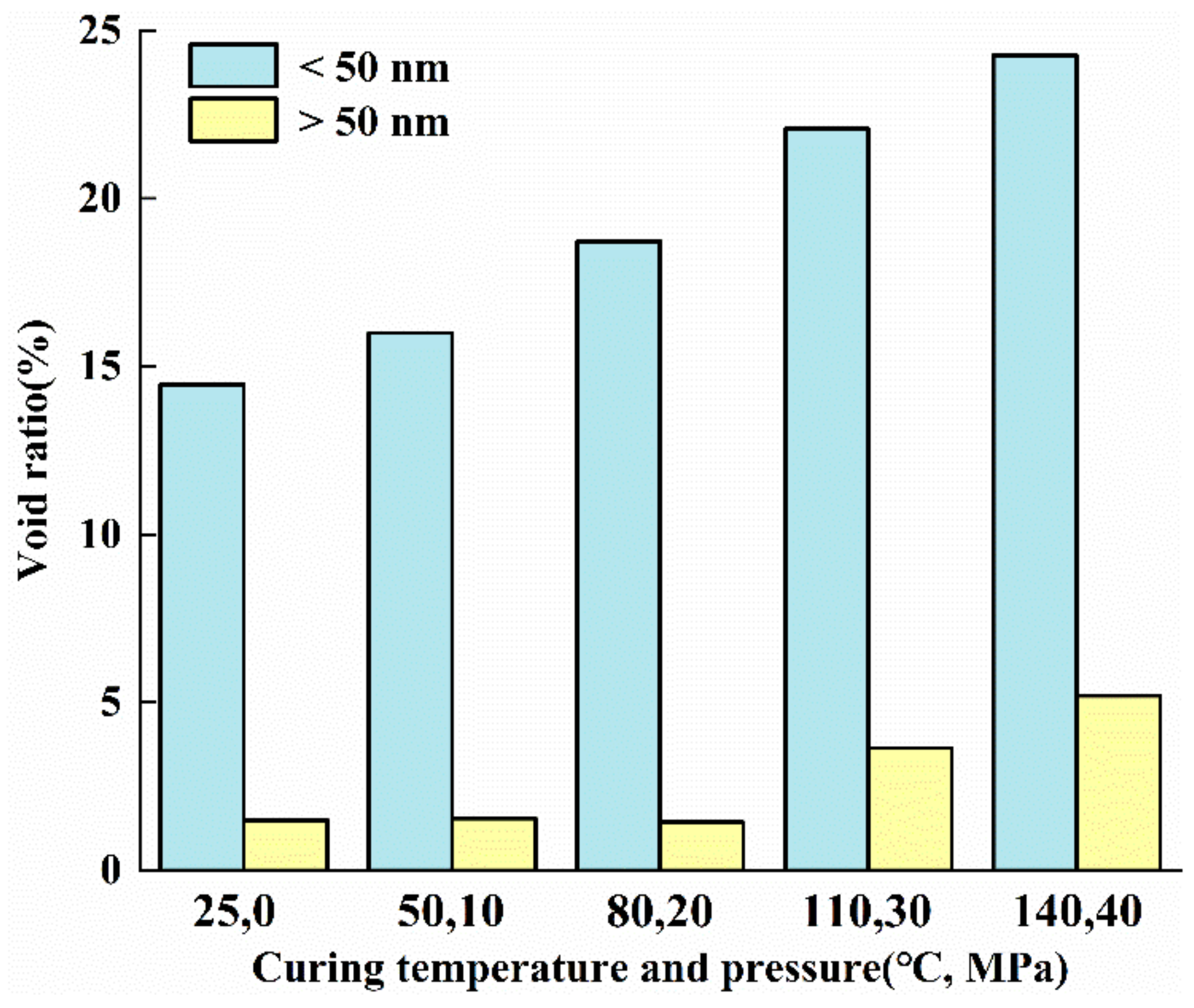
| Sample Number | Curing Conditions | Test Conditions | Diameter (mm) | Length (mm) | ||
|---|---|---|---|---|---|---|
| Temperature (°C) | Pressure (MPa) | Temperature (°C) | Pressure (MPa) | |||
| A-1 | 25 | 0 | 25 | 0 | 50.59 | 25.18 |
| A-2 | 50.64 | 25.31 | ||||
| A-3 | 50.73 | 25.38 | ||||
| B-1 | 50 | 10 | 50 | 10 | 50.76 | 25.57 |
| B-2 | 50.41 | 25.11 | ||||
| B-9 | 50.56 | 25.13 | ||||
| C-1 | 80 | 20 | 80 | 20 | 50.76 | 25.01 |
| C-2 | 50.50 | 25.07 | ||||
| C-3 | 50.21 | 25.09 | ||||
| D-1 | 110 | 30 | 110 | 30 | 50.60 | 25.24 |
| D-2 | 50.52 | 25.21 | ||||
| D-3 | 50.56 | 24.99 | ||||
| E-1 | 140 | 40 | 140 | 40 | 50.40 | 24.97 |
| E-2 | 50.52 | 25.22 | ||||
| E-9 | 50.40 | 25.07 | ||||
Publisher’s Note: MDPI stays neutral with regard to jurisdictional claims in published maps and institutional affiliations. |
© 2022 by the authors. Licensee MDPI, Basel, Switzerland. This article is an open access article distributed under the terms and conditions of the Creative Commons Attribution (CC BY) license (https://creativecommons.org/licenses/by/4.0/).
Share and Cite
Liu, B.; Wang, L.; Guo, Y.; Li, J.; Yang, H. Experimental Investigation on the Evolution of Tensile Mechanical Behavior of Cement Stone Considering the Variation of Burial Depth. Energies 2022, 15, 7340. https://doi.org/10.3390/en15197340
Liu B, Wang L, Guo Y, Li J, Yang H. Experimental Investigation on the Evolution of Tensile Mechanical Behavior of Cement Stone Considering the Variation of Burial Depth. Energies. 2022; 15(19):7340. https://doi.org/10.3390/en15197340
Chicago/Turabian StyleLiu, Bohang, Lei Wang, Yintong Guo, Jing Li, and Hanzhi Yang. 2022. "Experimental Investigation on the Evolution of Tensile Mechanical Behavior of Cement Stone Considering the Variation of Burial Depth" Energies 15, no. 19: 7340. https://doi.org/10.3390/en15197340
APA StyleLiu, B., Wang, L., Guo, Y., Li, J., & Yang, H. (2022). Experimental Investigation on the Evolution of Tensile Mechanical Behavior of Cement Stone Considering the Variation of Burial Depth. Energies, 15(19), 7340. https://doi.org/10.3390/en15197340










